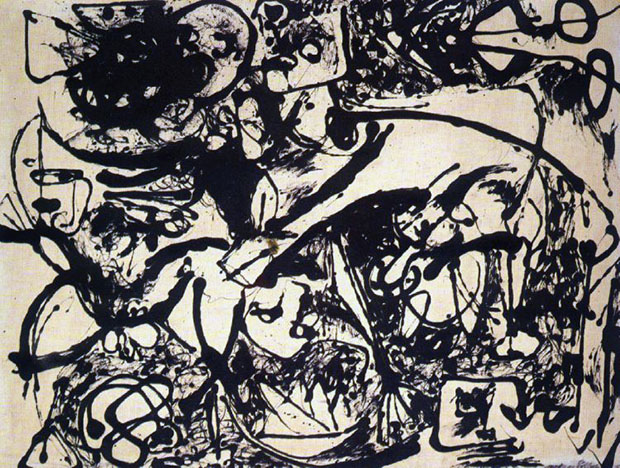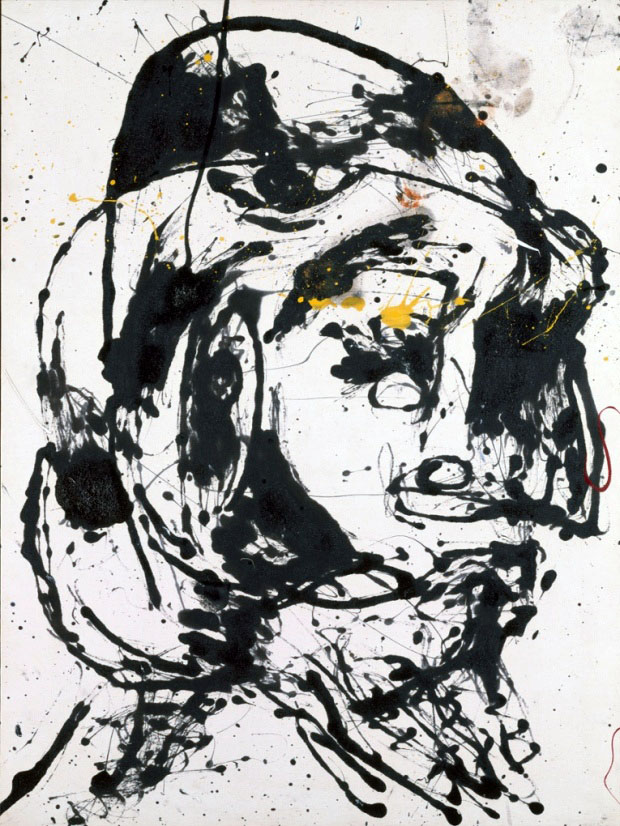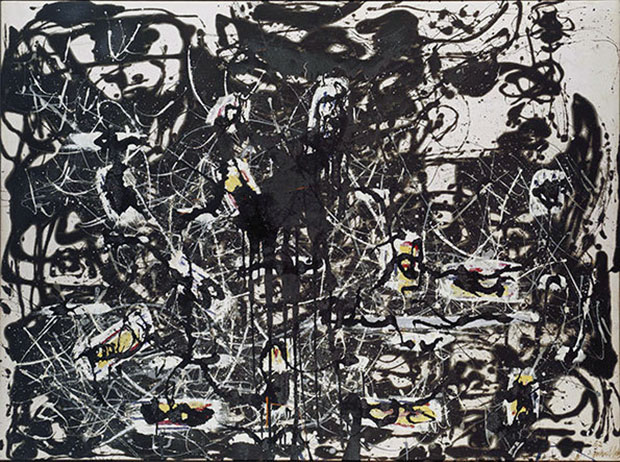
When Pollock stopped dripping and splashing
A new Tate Liverpool show looks back at a lesser-known period in Jackson Pollock's creative output
Jackson Pollock was not amused when, in February 1956, Time magazine dubbed him ‘Jack the Dripper’. The term did not suit the artist, not least because Pollock’s style of painting had changed since his critical peak, a few years earlier, when he had created such well-known works of abstract expressionism as Lavender Mist.
Around 1951, Pollock began a new style of painting, as author Helen A Harrison explains in our Phaidon Focus book dedicated to the artist. “After a winter hiatus, during which Pollock and [his wife, Lee] Krasner moved temporarily to Manhattan, he now began a series of stark monochromatic paintings on unprimed canvas in which distorted humanoid figures and schematic creatures are clearly visible.”
Rather than dripping the paint onto the canvas, “he began to treat enamel paint as a vehicle for pure draughtsmanship,” Harrison writes, a technique that was later characterized as pouring.

On 30 June Tate Liverpool will open a new exhibition of works from this period, 1951-53, in a show entitled Jackson Pollock: Blind Spots, that invites visitors to reconsider this overlooked, late-period lacuna in the artist’s career.
Pollock himself certainly viewed these near-figurative works as being quite distinct from his more recognizable paintings. “I’ve had a period of drawing on canvas in black,” the artist wrote to a friend, “with some of my early images coming through – think the non-objectivists will find them disturbing – and the kids who think it simple to splash a Pollock out.”
The critics may have liked these innovative new paintings but their enthusiasm did not translate into sales and, sadly, Pollock’s struggles with alcoholism put a brake on subsequent developments.
Nevertheless, these more descriptive works certainly merit closer examination, by both Pollock enthusiasts and fans of figurative art. As Harrison writes in a detailed study of one picture from this time, Number 8, 1951 ‘Black Flowing’, “like the Native American shamans whose pictographs often blur the distinction between humans and animals, Pollock created elusive, shape-shifting entities with supernatural overtones that satisfied his search for significant forms.”
The clearly defined images may have pleased the artist, but more clearly defined terms were less welcome. The labels “pouring” and “flowing” are now strongly associated with this period of Pollock’s oeuvre, yet neither term made for an entirely comfortable fit.

“The painting’s secondary title, Black Flowing, was not used until after Pollock’s death," writes Harrison "As an alternative to the somewhat pejorative ‘dripping’ (with its implications of an involuntary motion), which the French had already adopted, the word ‘flowing’ is more evocative of Pollock’s actual procedure, especially in regard to his frequent use of continuous streams of fluid paint, now commonly called the pouring technique. The introduction of ‘flowing’ as a descriptor highlights the difficulty of arriving at an appropriate term. Even though she declined to suggest a better option, Krasner considered ‘drip’ to be totally inadequate, even misleading, calling it a ‘very bad substitute to try to explain it.’”
While words might not quite do them justice, this new exhibition proves there was more to Pollock’s body of work than a simple assemblage of drips. For more on the show go here; for greater insight into postwar painting, buy a copy of Painting Beyond Pollock, and for serious insight into this important artist get our Jackson Pollock Phaidon Focus book.